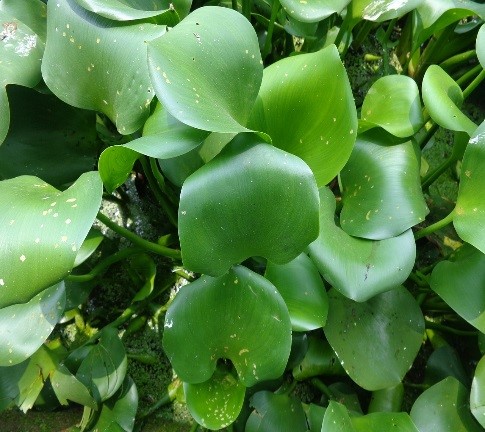การศึกษาเบื้องต้นในการใช้ผักตบชวาเพื่อเพาะเลี้ยงเห็ดกินได้
Main Article Content
Abstract
Jirapornpong Numsiri, Teerawat Khithen, Apiwat Sukkasem and Nattawut Rungjindamai
รับบทความ: 31 ตุลาคม 2564; แก้ไขบทความ: 30 มกราคม 2565; ยอมรับตีพิมพ์: 18 กุมภาพันธ์ 2565; ตีพิมพ์ออนไลน์: 15 พฤศจิกายน 2565
บทคัดย่อ
งานวิจัยนี้มุ่งศึกษาความเป็นไปได้ในการใช้ผักตบชวาเพื่อนำไปเพาะเลี้ยงเห็ด 3 ชนิดได้แก่ เห็ดนางฟ้า เห็ดนางรม และเห็ดเป๋าฮื้อ โดยทำการเพาะเลี้ยงเห็ดในอาหารจำนวน 3 สูตรได้แก่ 1) potato dextrose agar (PDA) 2) ผักตบชวาแห้ง และ 3) ผักตบชวาสด โดยเพาะเลี้ยงในขวดแก้ว หลังจากนั้นนำไปบ่มที่ 2 สภาวะ ได้แก่ อุณหภูมิห้อง (อยู่ระหว่าง 25–32°C) และอุณหภูมิคงที่ 25°C บ่มนาน 6 สัปดาห์ ผลการศึกษาพบว่าเส้นใยของเห็ดทั้งสามชนิด สามารถเจริญได้ดีทั้งในอุณหภูมิ 25°C และที่อุณหภูมิห้อง เห็ดเป๋าฮื้อเจริญเฉพาะบนผักตบชวาสดเท่านั้น แต่เห็ดนางฟ้าและเห็ดนางรมสามารถเจริญได้ทั้งบนผักตบชวาสดและแห้ง ผลการวิจัยแสดงให้เห็นว่าผักตบชวามีศักยภาพในการนำไปเพาะเห็ดแทนวัสดุดั้งเดิม เพื่อลดต้นทุนการผลิตและใช้ประโยชน์จากวัสดุเหลือใช้ในธรรมชาติ
คำสำคัญ: ผักตบชวา วัสดุเหลือใช้ทางการเกษตร เห็ดกินได้
Abstract
The aim of this research was to focus on utilization of water hyacinth as a substrate for cultivation of three edible mushrooms including phoenix mushroom, oyster mushroom and abalone mushroom. They were grown on 3 types of substrates including 1) PDA, 2) dried water hyacinth and 3) fresh water hyacinth. The mushrooms were grown in glass jars and incubated at two conditions [room temperature (25–32ºC) and 25ºC] for six weeks and the fungal growth was observed weekly. The result showed that these three mushrooms were able to grow at both 25ºC and room temperature. Abalone mushroom can only grow on fresh water hyacinth. However, phoenix mushroom and oyster mushroom can grow actively either fresh or dried water hyacinth. This demonstrates that water hyacinth has the potential to be used for mushroom cultivation since it can reduce the cost production and utilize the agricultural waste.
Keywords: Water hyacinth, Agricultural waste, Edible mushroom
Downloads
Article Details

This work is licensed under a Creative Commons Attribution-NonCommercial 4.0 International License.
References
Asavasaetakul, C., and Kanchanawatee, K. (2021). Preliminary screening of phyto-pathogenic fungi as biological control agents of water hyacinths (Eichhornia crassipes (Mart.) Solms). Journal of Research Unit on Science, Technology and Environment for Learning 12(2): 173–185.
Bandopadhyay, S. (2013). Effect of supplementing rice straw with water hyacinth on the yield and nutritional qualities of oyster mushrooms (Pleurotus spp.). Micologia Aplicada International 25: 15–21.
Belletini, M. B., Fiorda, F. A., Maieves, H. A., Teixeira, G. L., Avila, S., Hornung, P. S., Maccari Jr., A., and Ribani, R. H. (2019). Factors affecting mushroom Pleurotus spp. Saudi Journal of Biological Sciences 26(4): 633–646.
de Laet, C., Matringe, T. Petit, E., and Grison, C. (2019). Eichhornia crassipes: A powerful bio–indicator for water pollution by emerging pollutants. Scientific Reports 9: 7326.
Hoa, H. T., and Wang, C. L. (2015). The effects of temperature and nutritional conditions on mycelium growth of two oyster mushrooms (Pleurotus osteratus and Pleurotus cystidiosus). Mycobiology 43(1): 14–23.
Jha, S. K., and Gotame, M. (2020). Growth and yield performance of oyster mushroom (Pleurotus ostreatus) on water hyacinth as a substrate. Annals of Plant Sciences. 9: 3713–3724.
Numsiri, J., Kitchen, T., and Sukkasem, A.. (2018). Cultivation of Pleurotus Using Water Hyacinth as A Sustrate. B.Sc. (Biotechnology) Dissertation. Bangkok: King Mongkut’s Institute of Technology Ladkrabang. (inThai)
Su, W. P., Sun, Q. P., Xia, M. S., Wen, Z. S. and Yao, Z. T. (2018). The resource utilization of water hyacinth (Eichhornia crassipes [Mart.] Solms) and its challenges. Resources 7(4): 1–9.
Zharare, G., Kabanda, S., and Poku, J. (2010). Effects of temperature and hydrogen peroxide of eight Pleurotus strains. Scientia Horticulturae 125: 95–102.
